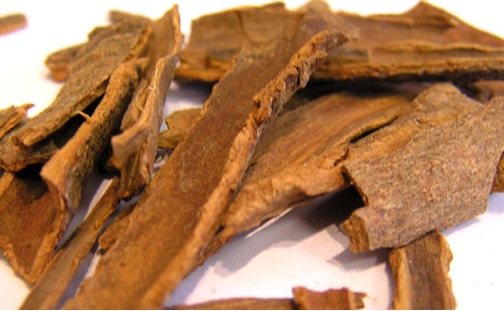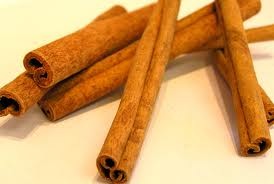|
God knows for how many decades orchid growers around the world have been protecting orchid plants from bacteria and fungi by dusting “cuts’, “blemishes” or “injuries” with Cinnamon powder. The ability of Cinnamon oil to stop the growth of bacteria and fungi is well documented and its antimicrobial properties are effective. Research has shown that it can also be used as a food preservative. (International Journal of Food Microbiology, Aug 2003). However, the word “Cinnamon” means different things to different people and even the experts get confused. Most if not all of the ground spice sold as cinnamon is actually Cassia. Cassia (Cinnamomum aromaticum) or Chinese cinnamon is an evergreen tree native to southern Asia. Cassia has an aromatic bark, like cinnamon, but differs in strength and quality. Cassia bark is darker, thicker and coarser and the corky outer bark is often left on. The outer skin is rough and grayish brown.
Cassia’s flavor is less delicate than that of “true cinnamon” and therefore less expensive. Consequently, it is mostly sold ground as cinnamon. Cinnamon powder is less common and expensive. There are many varieties of cassia: Chinese cassia (Cinnamomum cassia) from Burma and South China. Indian cassia (Cinnamomum tamala) from India. Indonesian cassia (Cinnamomum burmanni) or Padang cassia has a smoother bark and double quills. Saigon cassia (Cinnamomum loureirii), from Indonesia, Japan and Korea. Oliver’s Bark (Cinnamomum oliveri) an Australian substitute of cassia and cinnamon. Mossoia Bark (Cinnamomum) bad quality cassia from PNG. Ground cinnamon is not easy to distinguish from ground cassia. Cinnamon is tan in color with a sweet flavor, unlike ground cassia which has a more bitter and stronger flavor and a more aromatic bouquet. Cassia is reddish brown in color. Only when buying quills or sticks you can differentiate the two, Cassia and Cinnamon. True cinnamon quills or sticks will be curled in a telescopic form, while cassia quills curl inwards from both sides resembling scrolls
Cinnamomum verum, Ceylon cinnamon or “True Cinnamon”, is a small evergreen tree native to Sri Lanka. Cassia being a member of the cinnamon family could probably be used to stop bacterial growth or fungi. However, it is not known how good or strong it is when compared with true cinnamon or even if it can do the job.
PS: Being a member of the same family means nothing. For example: The genus solanum incorporates the most poisonous plants to humans. It also includes some important food crops. S. lycopersicum (Tomato), S. tuberosum (Potato), s. melongena (Eggplant), s. muricatum (pepino), etc |
 Cassia
Bark
Cassia
Bark Cassia
sticks
Cassia
sticks Cinnamom
quills
Cinnamom
quills